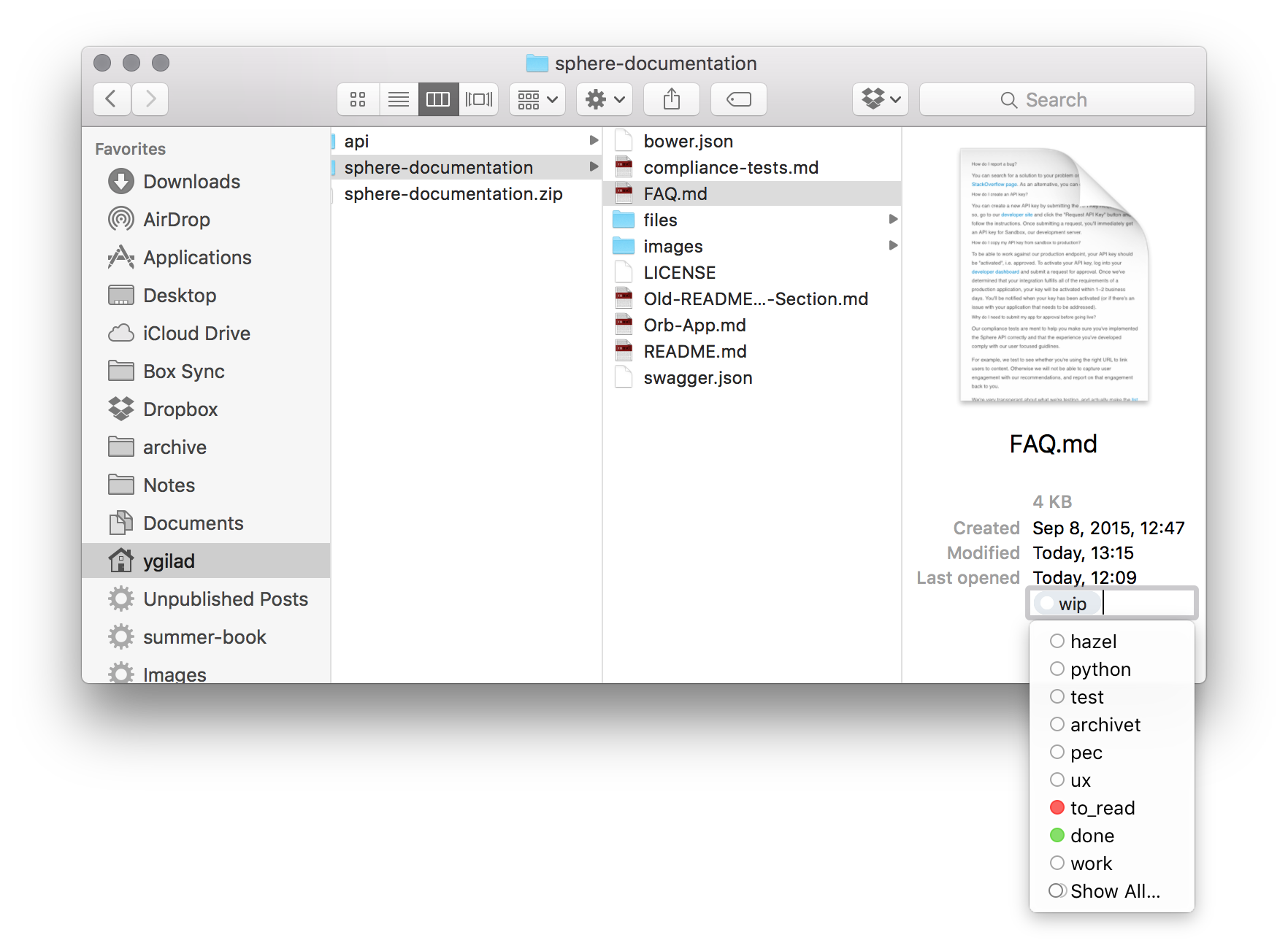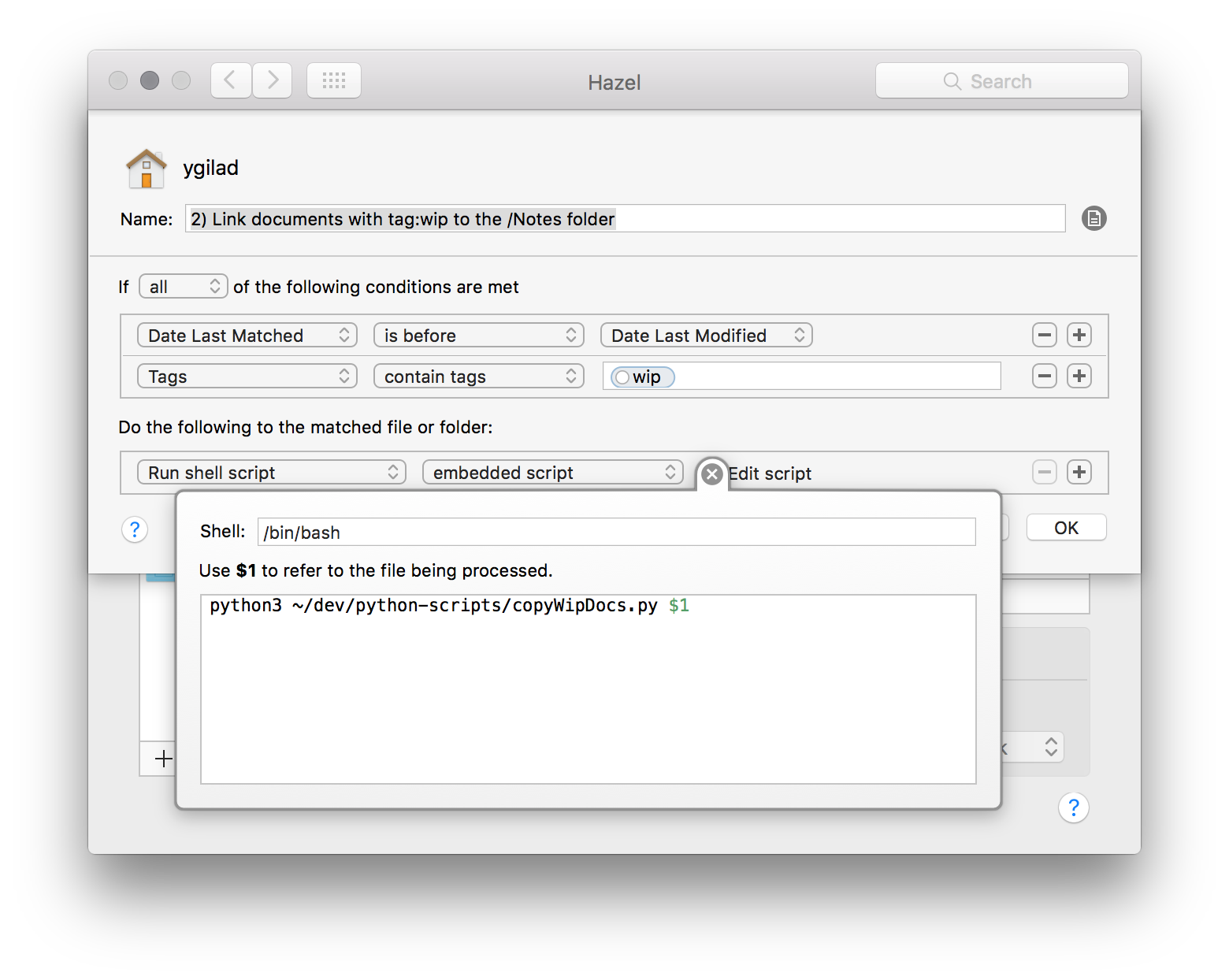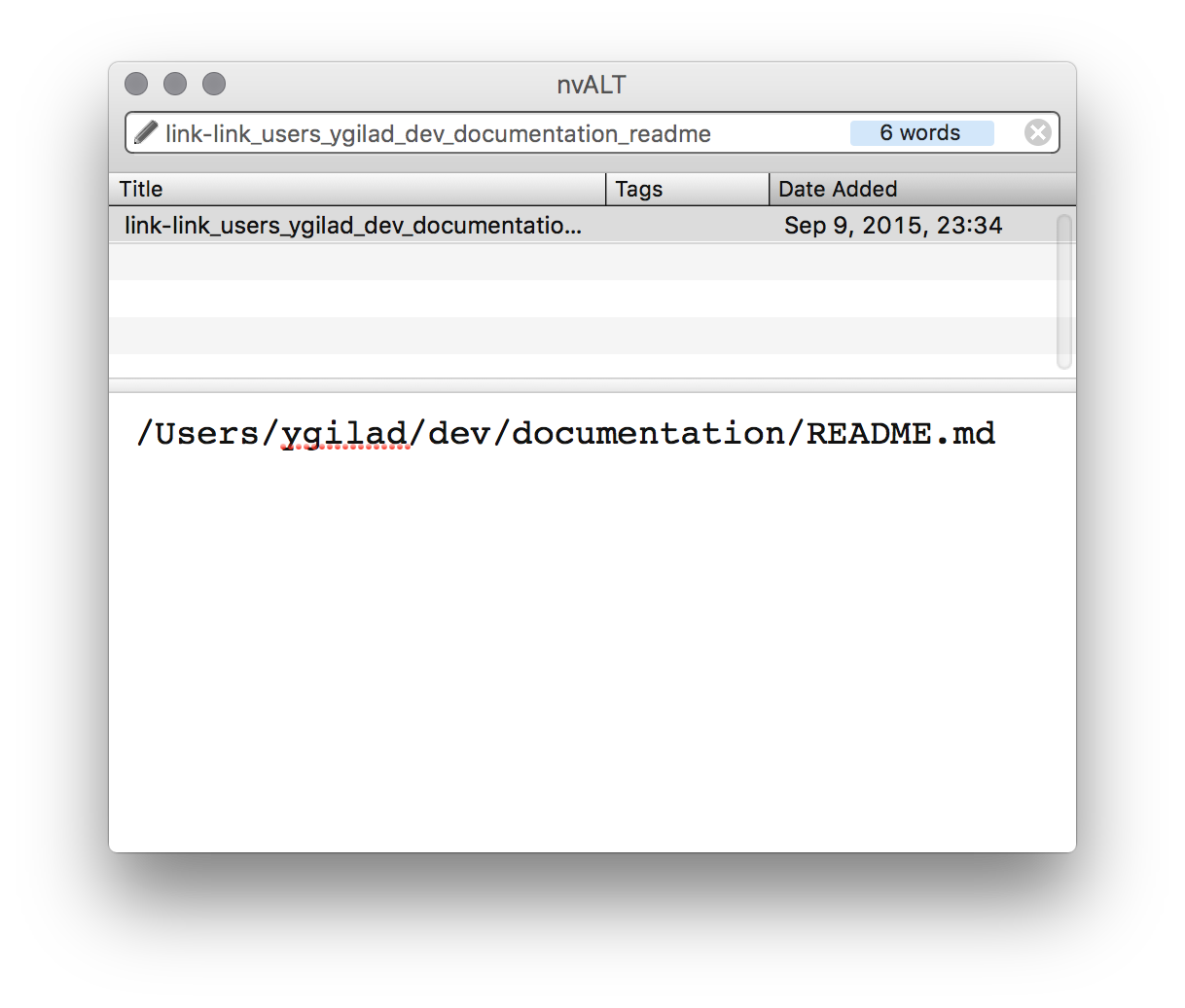I recently stopped using
Evernote
and started to manage my notes exclusively in Dropbox. My configuration
revolves around a Notes folder. I use
nvAlt to browse through the
notes in that folder and add new ones. If I want to do more than just a
scribble, I use the command-e key binding in nvAlt to open the
document in MultiMarkdown Composer.
Storing all my notes in one folder has a major limitation, though. As
notes accumulate, looking for a specific note becomes impossible. This
is actually one of the main reasons to my departure from Evernote. To
avoid this problem, I set Hazel
to monitor my Notes folder and move everything that wasn't modified in
the last 30 days to a designated archive folder. Archived notes don't
show in nvAlt, yet easily accessible through Finder.
Now that I have a home to my notes, I would like to add some logic to streamline my writing workflow. To begin with, I would like to aggregate documents I'm working on, and are in other folders, to my main notes' repository.
For example, I'm currently writing a readme file for one of my git
repositories. This repo lives within its own folder, where the readme
file resides as well. Keeping this file out of my Notes folder means
that it's a hassle to go back and open it when needed. It also means
that I can't work on it when I'm on my iPhone ^1{#fnr.1
.footref}^.
So, what I needed was a way to mark a document, and have it magically
show up in my Notes folder, hence available in nvAlt. Following is the
recipe I came up with to address this need.
Let's start with the ingredients:
- Finder
- Hazel
- Python
And here's how to mix these components together:
- Open Finder and tag
wipthe document I want to work on and make available in nvAlt.
- Configure a Hazel rule that monitors my home folder, looking for
files containing the
wiptag ^2^.
- Create a python script that takes a file's path as an input and
place a symbolic link to it in my
Notesfolder.
#! /usr/local/bin/python3
import os, sys, shutil
import logging
# Configuring logging to be written into a file in the system's log folder
logging.disable(logging.CRITICAL)
logging.basicConfig(filename='/Users/ygilad/Library/Logs/Python/myPythonLogs.log', level=logging.DEBUG, format=' %(asctime)s - %(levelname)s - %(message)s')
def moveFileToNote(filePath):
# Set the link name to the original file.
# Path to the original file is included for two reasons
# 1) Avoid naming conflicts and
# 2) remind myself where this file came from
fileName = 'link' + filePath.replace('/','_').lower()
logging.debug('Filename: ' + fileName)
# Make sure that the input is a file and not a folder
if len(fileName) > 0:
try:
# Add the link to my central note repository
os.symlink(filePath , '/Users/ygilad/Dropbox/Notes/link-'+ fileName)
logging.debug('Created a file link')
except FileExistsError:
logging.debug('File already exists at the target folder')
else:
logging.debug('Input is not a file')
# Accept the path coming from Hazel
hazelLocalFile = sys.argv[1]
logging.debug(hazelLocalFile)
# The body of the script
moveFileToNote(hazelLocalFile)
There is one drawback I wasn't able to solve - nvAlt doesn't show the
content of the link. All it does show is the path of the original
document.
While I can't edit the file directly in nvAlt, I can still do it in MultiMarkdown Composer or Editorial on my iPhone.
-
I keep git repositories in a local folder out of Dropbox reach, because I heard that you shouldn't mix the two together. ↩
-
I found that creating a rule that monitors a folder and its sub-folders is a bit tricky, but eventually learned how to do it thanks to this post. ↩